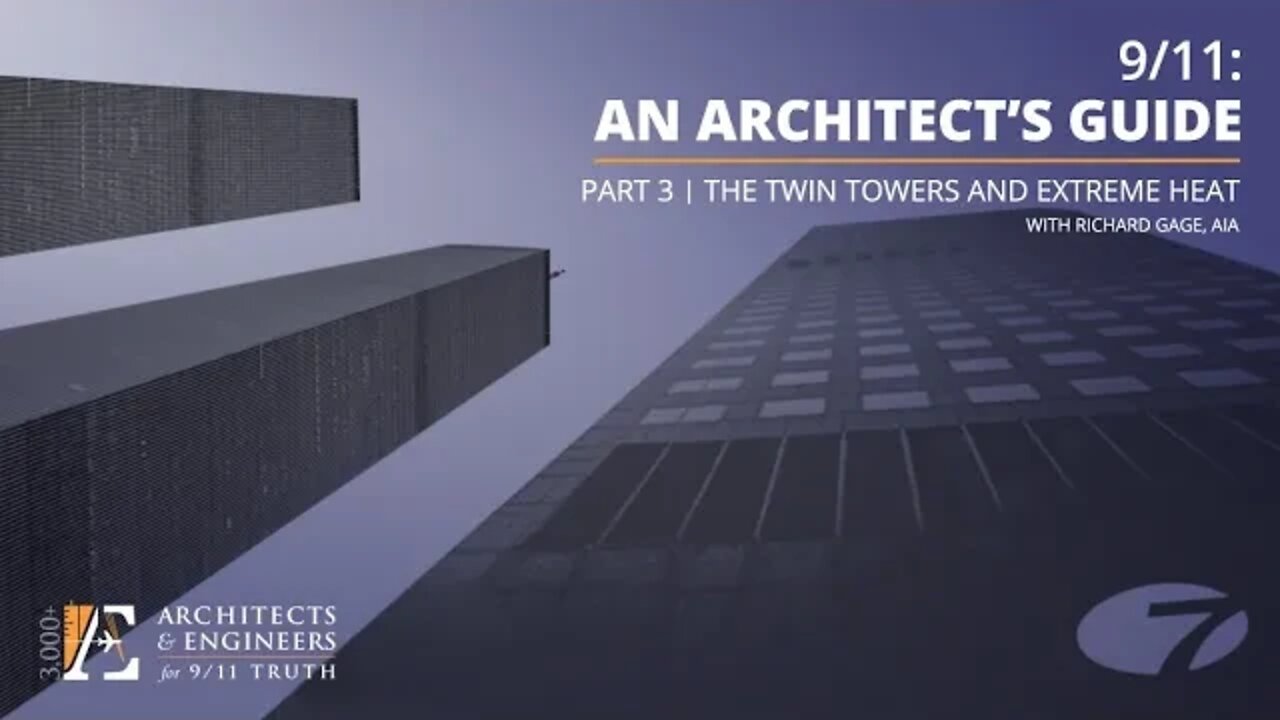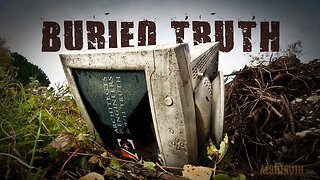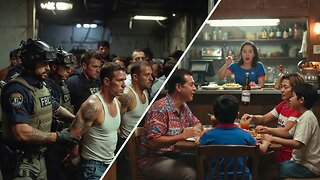Premium Only Content

9/11: An Architect's Guide - Part 3: The Twin Towers and Extreme Heat (12/17/20 Webinar - R Gage)
9/11: An Architect’s Guide | Part 3: The Twin Towers and Extreme Heat
Course Number: AE911-AAG-L3
Live three-part webinar series. Each part is about 1 1/2 hours long.
As a 501(c)(3) nonprofit organization dedicated to conducting research and providing education about the complete destruction of the three World Trade Center skyscrapers, our courses give architects the technical knowledge and analytical framework with which to evaluate the most likely cause of those building failures.
Course Description:
Never before has a steel-framed high-rise collapsed from fire. Why, then, did three such buildings collapse on September 11, 2001?
In Part 3 of “9/11: An Architect’s Guide,” Richard Gage, AIA, provides an overview of the most important evidence related to the extreme heat observed both before and after the Twin Towers’ destruction.
As documented extensively in the report issued by the National Institute of Standards and Technology (NIST), molten metal was seen pouring out of the South Tower during the seven minutes leading up to its collapse. Molten metal was also observed in the debris of both buildings, while various other evidence of extreme heat and incendiary chemical reactions have been documented since.
In 2005, NIST concluded that the Twin Towers’ destruction resulted from the combined effects of the airplane impact damage and ensuing fires, both of which are phenomena that fail to account for the extreme heat observed before and after the Twin Towers’ destruction.
Does NIST’s explanation for these unprecedented structural failures explain all of the evidence? Together, we will study the collapses and evaluate which of the two leading hypotheses — fire-induced failure or controlled demolition — is more consistent with the evidence. Participants will be encouraged to decide for themselves if a new investigation is warranted.
Learning Objectives:
Participants will be able to:
1. Describe the characteristics of building fires and the aspects of high-rise design that contribute to make fire-induced failure in steel-framed high-rise buildings a rare occurrence.
2. Recognize the distinct features associated with fire-induced failure and the distinct features associated with the procedure of controlled demolition.
3. Describe step-by-step the series of structural failures that the National Institute of Standards and Technology found to be the most likely cause of the collapse of World Trade Center Twin Towers.
4. Analyze the physical evidence and the dynamics of the collapse of the Twin Towers according to how consistent it is with the competing hypotheses of fire-induced failure and controlled demolition.
Visit http://AE911Truth.org/Continuing-Ed.html for more information.
-
 59:39
59:39
Architects & Engineers for 9/11 Truth
2 years agoBurying the Truth | FreeFall w Adam Syed
3.94K1 -
 1:01:16
1:01:16
Timcast
2 hours agoTrump TROLLS Legacy Media, Announces WARRIOR DIVIDEND, Venezuela Fake Out
140K44 -
 LIVE
LIVE
Sean Unpaved
1 hour agoSeahawks Looking For REVENGE Against Rams! | UNPAVED
377 watching -
 LIVE
LIVE
The Amber May Show
4 hours agoLaw & Disorder: FBI Shakeups, Arrest Waves, and a Culture That’s Gone Off the Rails
181 watching -
 1:25:01
1:25:01
Misfits Mania
1 day ago $8.67 earnedMISFITS MANIA: Press Conference
20.2K11 -
 1:31:26
1:31:26
Graham Allen
2 hours agoLive From AMFEST 2025: Day 1
34K9 -
 1:56:43
1:56:43
Steven Crowder
5 hours agoLWC Christmas Special 2025 | Giving Back with Santa Crowder
241K107 -
 14:33
14:33
Robbi On The Record
3 hours ago $2.84 earnedNPC Girls & The Digital Dehumanization of Women
29.6K7 -
 53:25
53:25
Simply Bitcoin
1 day ago $1.39 earnedThe Bitcoin Crucible w/ Alex Stanczyk & Tomer Strolight - Episode 13
28.4K1 -
 59:21
59:21
The Rubin Report
3 hours agoIs This the Real Reason Bongino Is Leaving the FBI?
47K64